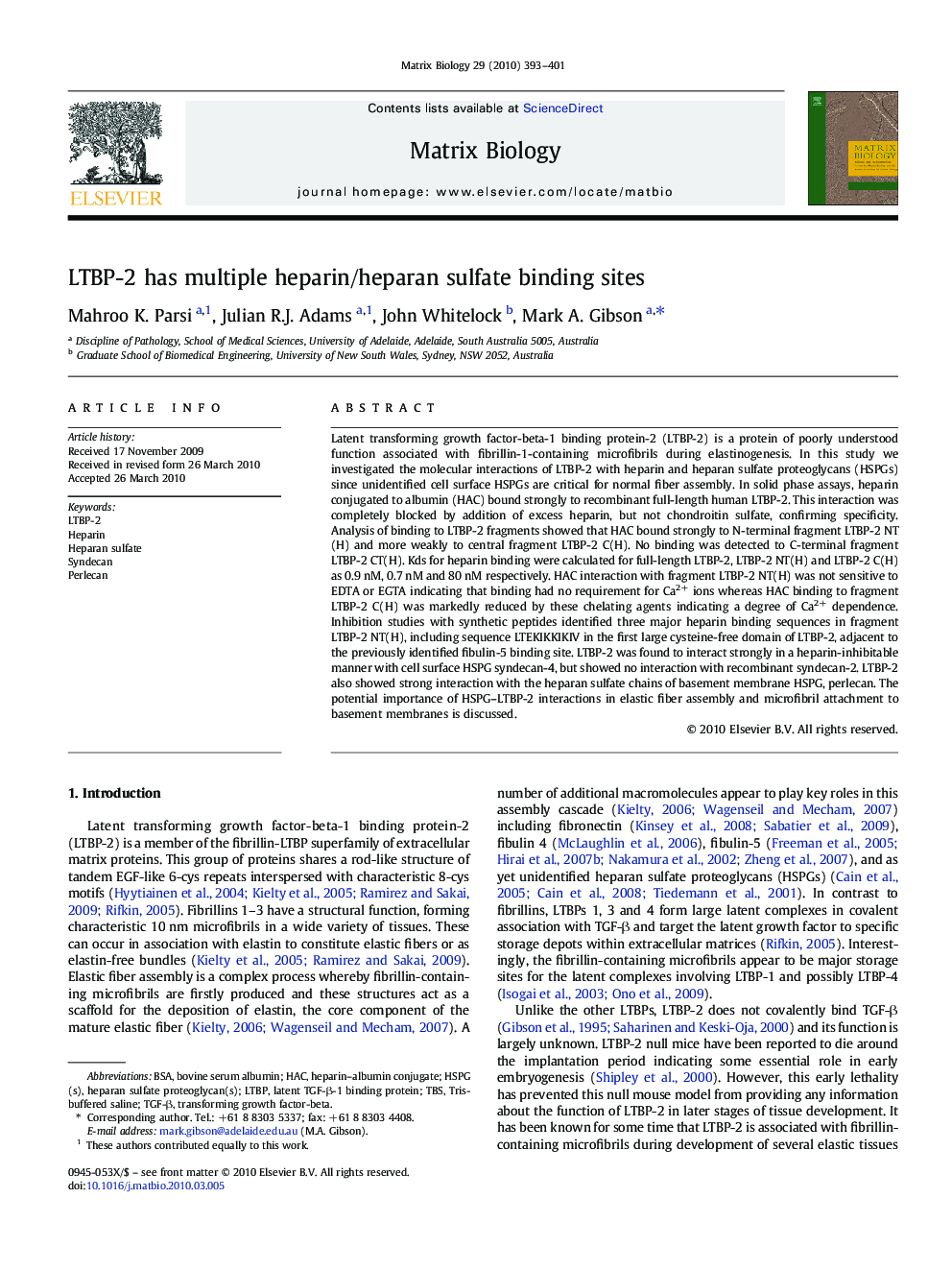| Article ID | Journal | Published Year | Pages | File Type |
|---|---|---|---|---|
| 2144998 | Matrix Biology | 2010 | 9 Pages |
Latent transforming growth factor-beta-1 binding protein-2 (LTBP-2) is a protein of poorly understood function associated with fibrillin-1-containing microfibrils during elastinogenesis. In this study we investigated the molecular interactions of LTBP-2 with heparin and heparan sulfate proteoglycans (HSPGs) since unidentified cell surface HSPGs are critical for normal fiber assembly. In solid phase assays, heparin conjugated to albumin (HAC) bound strongly to recombinant full-length human LTBP-2. This interaction was completely blocked by addition of excess heparin, but not chondroitin sulfate, confirming specificity. Analysis of binding to LTBP-2 fragments showed that HAC bound strongly to N-terminal fragment LTBP-2 NT(H) and more weakly to central fragment LTBP-2 C(H). No binding was detected to C-terminal fragment LTBP-2 CT(H). Kds for heparin binding were calculated for full-length LTBP-2, LTBP-2 NT(H) and LTBP-2 C(H) as 0.9 nM, 0.7 nM and 80 nM respectively. HAC interaction with fragment LTBP-2 NT(H) was not sensitive to EDTA or EGTA indicating that binding had no requirement for Ca2+ ions whereas HAC binding to fragment LTBP-2 C(H) was markedly reduced by these chelating agents indicating a degree of Ca2+ dependence. Inhibition studies with synthetic peptides identified three major heparin binding sequences in fragment LTBP-2 NT(H), including sequence LTEKIKKIKIV in the first large cysteine-free domain of LTBP-2, adjacent to the previously identified fibulin-5 binding site. LTBP-2 was found to interact strongly in a heparin-inhibitable manner with cell surface HSPG syndecan-4, but showed no interaction with recombinant syndecan-2. LTBP-2 also showed strong interaction with the heparan sulfate chains of basement membrane HSPG, perlecan. The potential importance of HSPG–LTBP-2 interactions in elastic fiber assembly and microfibril attachment to basement membranes is discussed.
